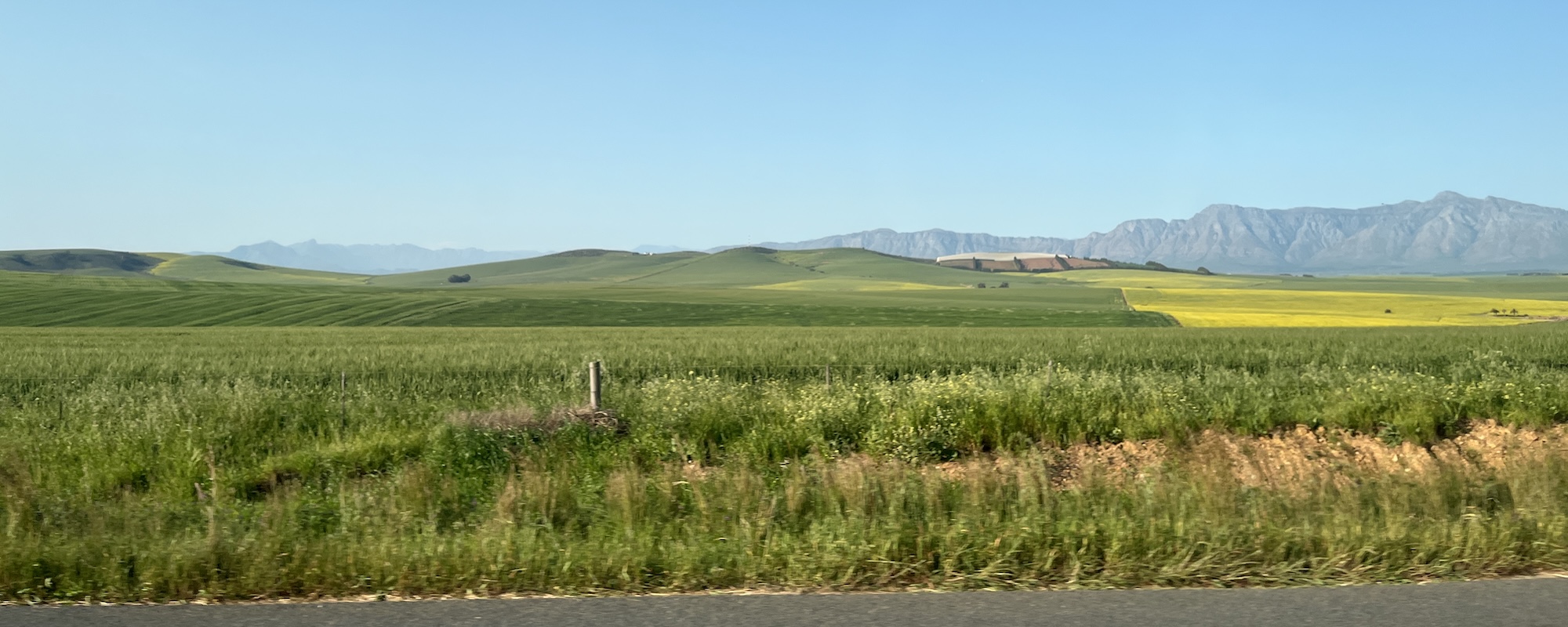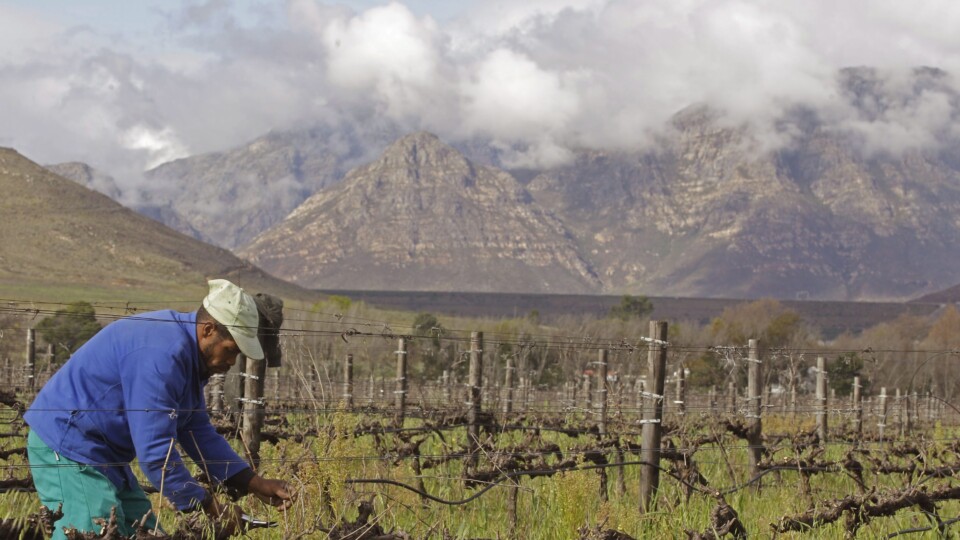I spent the better part of a week last month in the Western Cape of South Africa. I was briefly in the vineland around Stellenbosch and a little further west in the Swartland, and then in Cape Town for the country’s big wine show, Cape Wine. It was my first time back in 13 years, and I was as happy to return to that beautiful country as I was excited to see what had changed.
The beauty of Cape Wine is that just about everyone in the business (or craft) of making wine goes. Since my last visit in 2012, I have kept in touch and kept tabs on a handful of South African winemakers, especially those who make it to Canada every few years. But for three days in the great hall of the Cape Town International Convention Centre, I had access to the full spectrum of people, terroirs, grapes, and all things related to wine made in the Southern tip of Africa.
While I knew Cape Wine would be lekker, the Afrikaans word which means both delicious and very nice, I was also excited to get out in the field. When I attended Cape Wine in 2012, the corner of the show that had the most buzz was a group of new generation winemakers, the Swartland Independents, led by the charismatic Adie Badenhorst. Since then, the reputation of the Swartland producers who were there, like Eben Sadie, Andrea and Chris Mullineux, and Callie Louw (Porseleinberg), had only grown.
I hoped dearly I would get to Swartland to see where it all happened, and was delighted when my hosts for the trip, Wines of South Africa (WOSA), gave me a place at a tasting and dinner on my first night in the country in Swartland at the Badenhorst winery and farm. All the originals were there, and some new ones, at least to me. The difference now was that the place and the people had become established; no longer revolutionaries, some were even employing a second generation.

I have always enjoyed Swartland wines, especially made with grapes native to places in Southern Europe, like the Rhône Valley or even Portugal. I wanted to get a better understanding of why.
I knew the van carrying me had reached Swartland because the landscape suddenly changed from the hills and mountains of Stellenbosch, Franschhoek, and Paarl to big sky country. The farms were big, spread over wide valleys, with mountains in the distance.
I had assumed that 20, 15, or 10 years ago, the Young Turks of Swartland had planted exotic grape varieties to be different. In fact, for the most part, they had instead found them. South African law prohibits the division of farmland, so vineyard holdings of hundreds of hectares have remained intact and often in the same family. All kinds of weird and wonderful things could be, and still are being discovered among the seas of vine rows.
After the evening in Swartland, I spent the morning in the bucolic, though difficult to spell, Franschhoek Valley. Franschhoek means “French Corner” and refers to the Huguenot protestants who settled there, having fled France to Holland, and then the Cape Colony in the late 17th century. They brought grapes with them.
The Huguenots famously brought the white Chenin Blanc grape to what’s now South Africa. It became the most widely planted grape in the country because the Dutch found it made good brandy. They sold it as provisions to ships on their way to East India during the colonial era. The Huguenots also brought red grapes, including Pinot Noir and Cinsault.

i
The South African Swartland countryside. Credit: Malcolm Jolley.
Cinsault was called Hermitage in the South Africa of 1925 when it was crossed with Pinot Noir at the University of Stellenbosch. The new grape was christened Pinotage. Pinotage was forgotten in the university’s garden for a couple of decades before it was rediscovered and went on to become South Africa’s most widely planted red wine grape in the last half of the 20th century.
Because Pinotage’s DNA is a mix of two vinifera (colloquially “noble”) grape varieties, it is not considered a “hybrid,” and to avoid going to wine writers’ jail, one refers to it as a “cross.” However noble its parentage, its prized attribute until recently was its ability to flourish in South African growing conditions. Unfortunately, Pinotage developed a reputation for high-yielding vines that made mediocre wines.
I held an anti-Pinotage prejudice for nearly 20 years based on mass market wines that tasted vaguely of rubber (from sunburned grapes), or bizarrely were made on purpose to taste like coffee. Then, a few years ago, I was dared to try a version of it made by Radford Dale. It was light, elegant, and full of red fruit, as though it had developed some of the best attributes of its parents.
One of my goals at Cape Wine was to find more of these sophisticated Pinotage wines. As though WOSA had read my mind over the ocean (or possibly consulted with their Canadian representative, to whom I may have mentioned it and Swartland), my morning at the Allée Blue winery in Franschhoek would comprise of a tasting and panel seminar of Pinotage wines, in the presence of their winemakers.
Before the seminar, we walked out to a terrace overlooking rows of vineyards and the Franschhoek Mountains in the distance. It was a sunny spring day, and we began our visit with Allée Bleu sparkling wine.

Méthode Cap Classique (pronounced with a combination of French Afrikaans accents) is a South African wine topic in its own right. Stay tuned. The two served with a lekker late breakfast of South Atlantic oysters dressed with pineapple and chilli, were blanc de noir and a rosé made with Pinotage. These were certainly light and bright, and a bit dangerous before lunch.
The Pinotage tasting turned out not to be fully Pinotage. It was to begin blind, with two flights of four wines. In each flight were three South African Pinotages and one wine made with another grape from somewhere else. The audience of a few dozen wine journalists from around the world had to guess which was which and vote on it by raising our hands for all to see.
I got it right on the second flight, but not until I was off on my guess with the first. I confused a Dolcetto from Piedmont for Pinotage and a Pinotage for, well, something else. Lucinda Heyns made the 2023 Illimis Pinotage from False Bay, on the other side of Table Mountain from Cape Town. It was the one that I got wrong, and she was sitting beside me.
Heyns was gracious about my mix-up. In fact, she seemed pleased that the tasting was defying expectations and showing Pinotage’s lighter and food-friendly side. The other outlier wine in the mix was a Morgon from Beaujolais, made with Gamay.
During the seminar, we heard from Dr. Etienne Terblanche, a viticulturist who wrote his doctorate on Pinotage. He described it as “definitely not a fickle grape.” There will be Pinotage in South Africa for a long time because it does so well.
I took this as good news and have returned from South Africa with the zeal of the Pinotage-loving convert. As I headed to Cape Town from Franschhoek after lunch, I was determined to try as much new-style Pinotage as I could at Cape Wine. I did, as well as a lot of wine made with other grapes. Details to follow.

Malcolm Jolley
Malcolm Jolley is a roving wine and food journalist, beagler, and professional house guest. Based mostly in Toronto, he publishes a sort…
Read more


Dining and Cooking